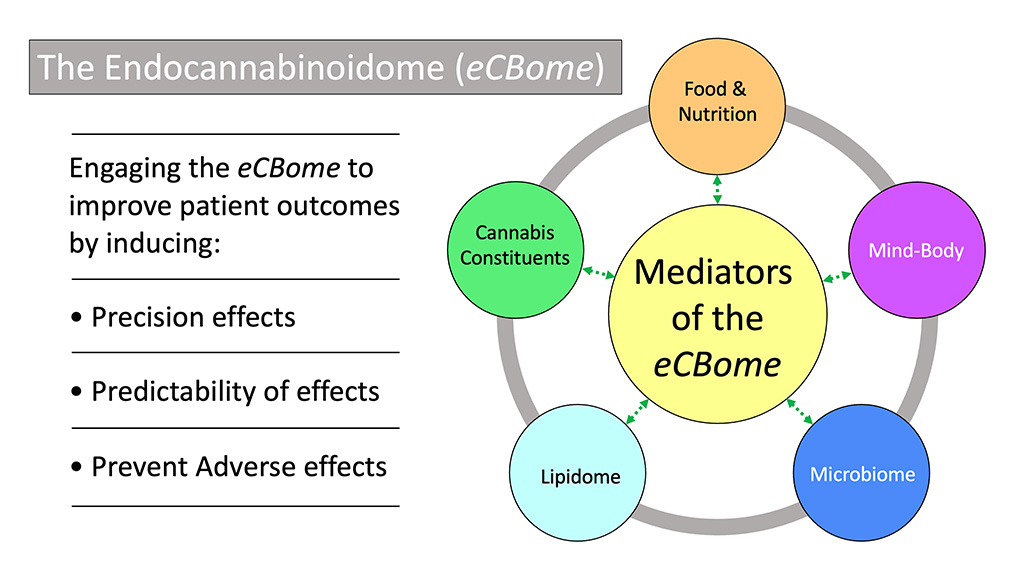The relatively new idea of an endocannabinoidome (eCBome) is used to describe the larger environment that interacts with the endocannabinoid system (ECS). This includes all knowns aspects of the ECS (i.e., endocannabinoids, endocannabinoid receptor sites, their metabolizing enzymes, and endocannabinoid tone). This interaction is not a one-way street but a complex cross-talk-based mechanism between the ECS and eCBome.
For instance, when a patient uses a tincture containing THC, both CB1 and CB2 are activated in a dose-dependent fashion, which in turn will induce specific effects that we have come to expect, such as changes in cognition (via CB1) or immunomodulatory effects (via CB2). However, many additional modifications are set in motion beyond the initial impact of CB1 and CB2 signaling. These include complex crosstalk between the classical components of the ECS (in this case, CB1 and CB2 signaling) but also eCBome-related neurotransmitters (e.g., serotonin), hormones (e.g., cortisol), and other communication signals (e.g., anti-inflammatory cytokines), influencing different physiological and mental-emotional experiences [e.g., memory (e.g., acetylcholine), relaxation (e.g., gamma-aminobutyric acid), or bliss (e.g., oxytocin)].
The clinical usefulness of engaging the eCBome becomes apparent when we consider that chronic stressors such as aging can significantly contribute to losing our capacity for healthy and balanced endocannabinoid signaling.

By engaging known mediators, we can harness the complex therapeutic crosstalk potential between the ECS and the eCBome. The more we learn about these general and specific effects, the more we can make new and practical choices supporting optimal endocannabinoid signaling. A practice that allows us to:
- Induce precision effects.
- Establish predictability of impact.
- Prevent or lower any adverse effect potential.
- Reduce the amounts of cannabis-based products to achieve the same or better and longer-lasting results.
CannaKeys is tracking the emerging scientific trends of groups of modulators that activate the crosstalk between the eCBome and the ECS, such as cannabis constituents (e.g., THC, CBD, beta-caryophyllene), food (e.g., keto- or Mediterranean diet), nutraceuticals (e.g., turmeric), mind-body approaches (e.g., mindfulness, exercise, acupuncture), the microbiome (e.g., probiotics), the lipidome (e.g., omega-3, C15), and certain psychotropics (e.g., Ayahuasca) that have the potential to significantly improve patient outcomes.
The Takeaway
One of the more exciting aspects of working with the eCBome is that, except for cannabis-based products, government policies, and control support all other pathways or mechanisms that allow us to harness the eCBome in the clinical setting. They are easy to obtain almost everywhere without a prescription, easy to learn about, and can be used to meet specific needs or preferences regarding establishing one’s optimal healthcare regimen.


